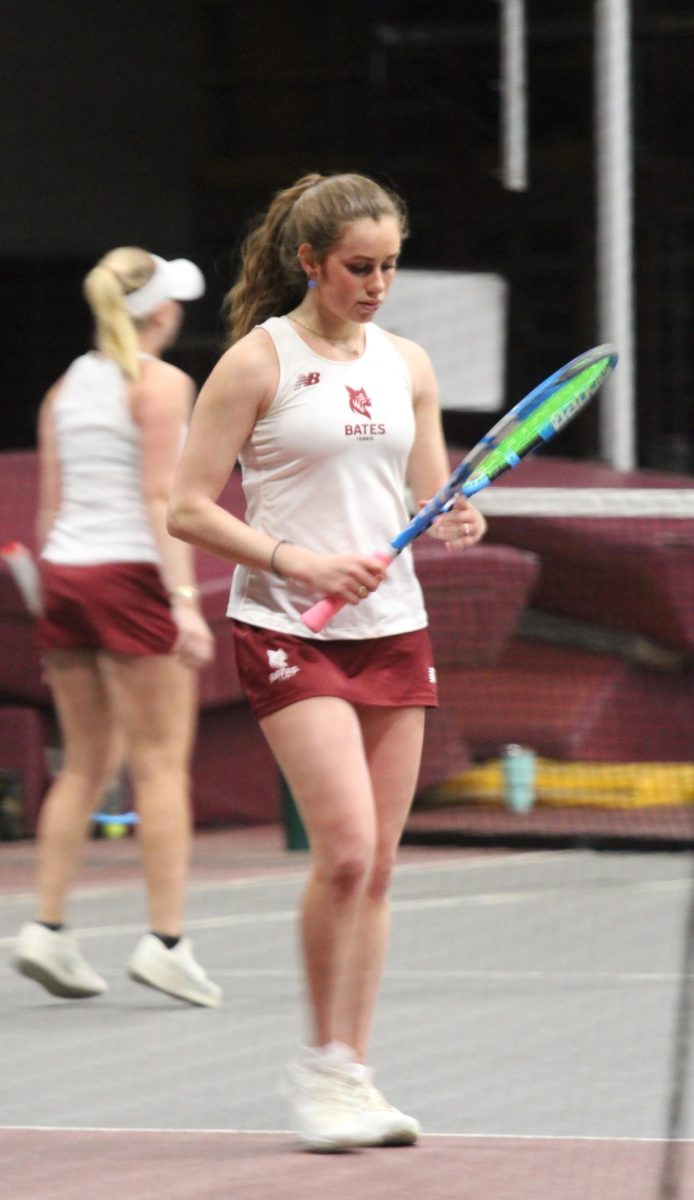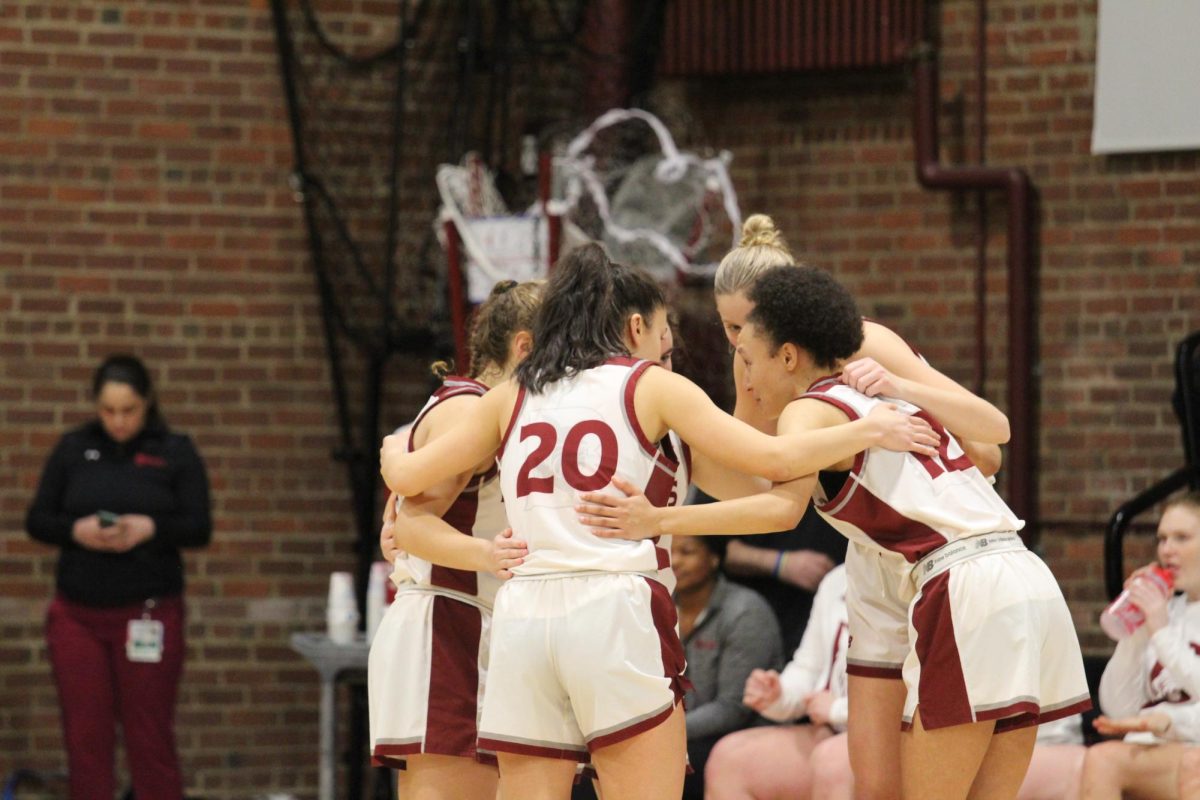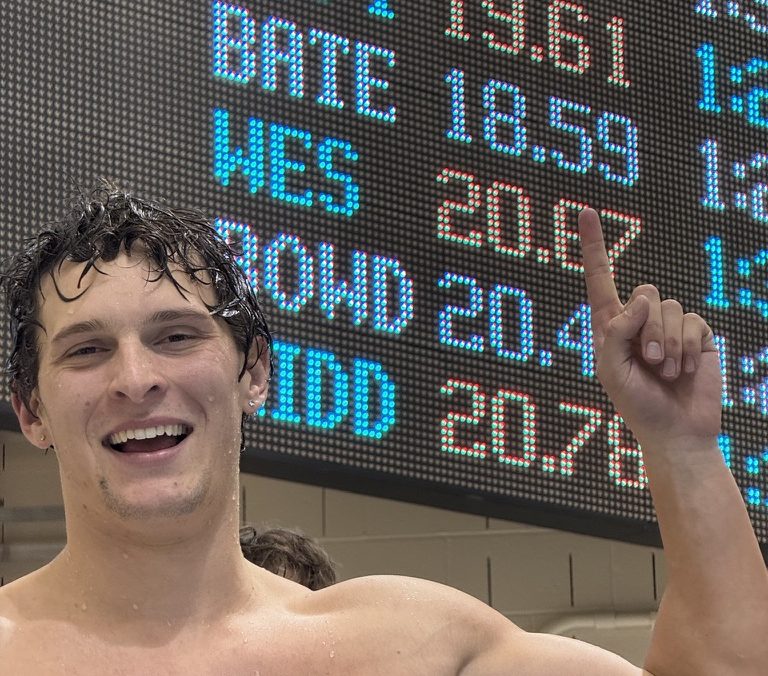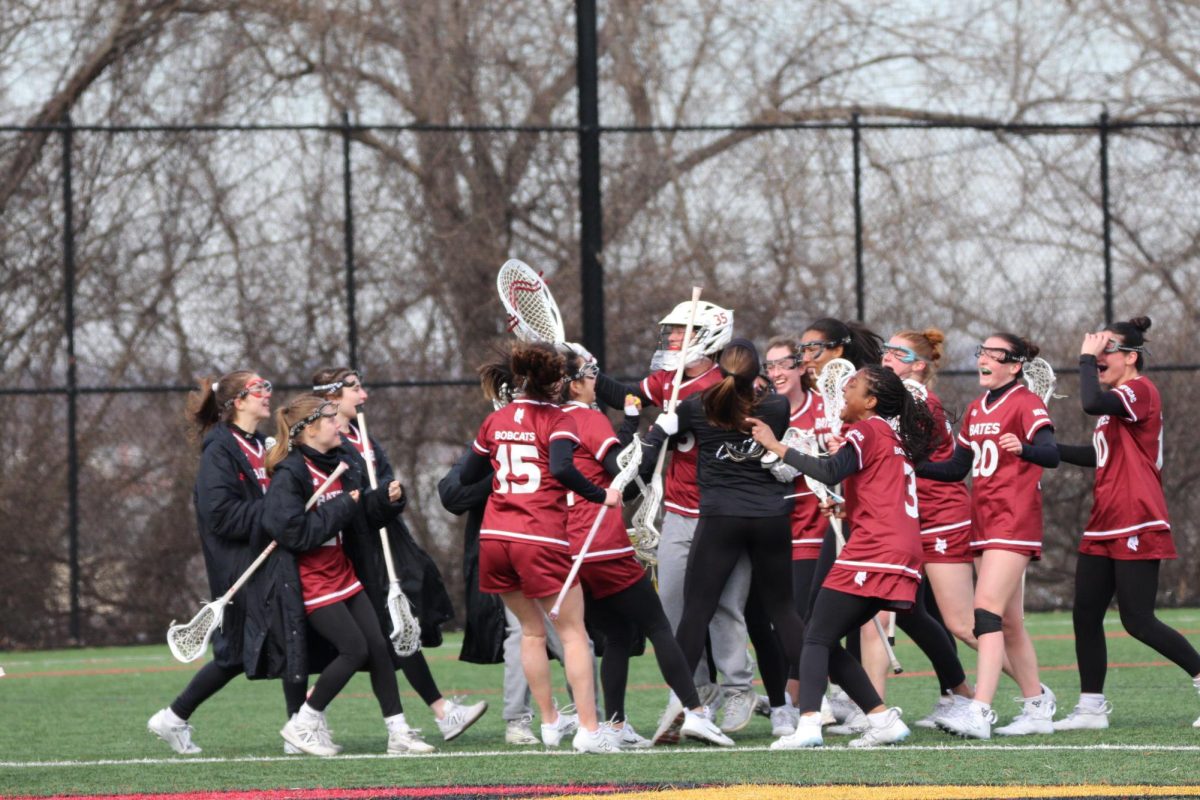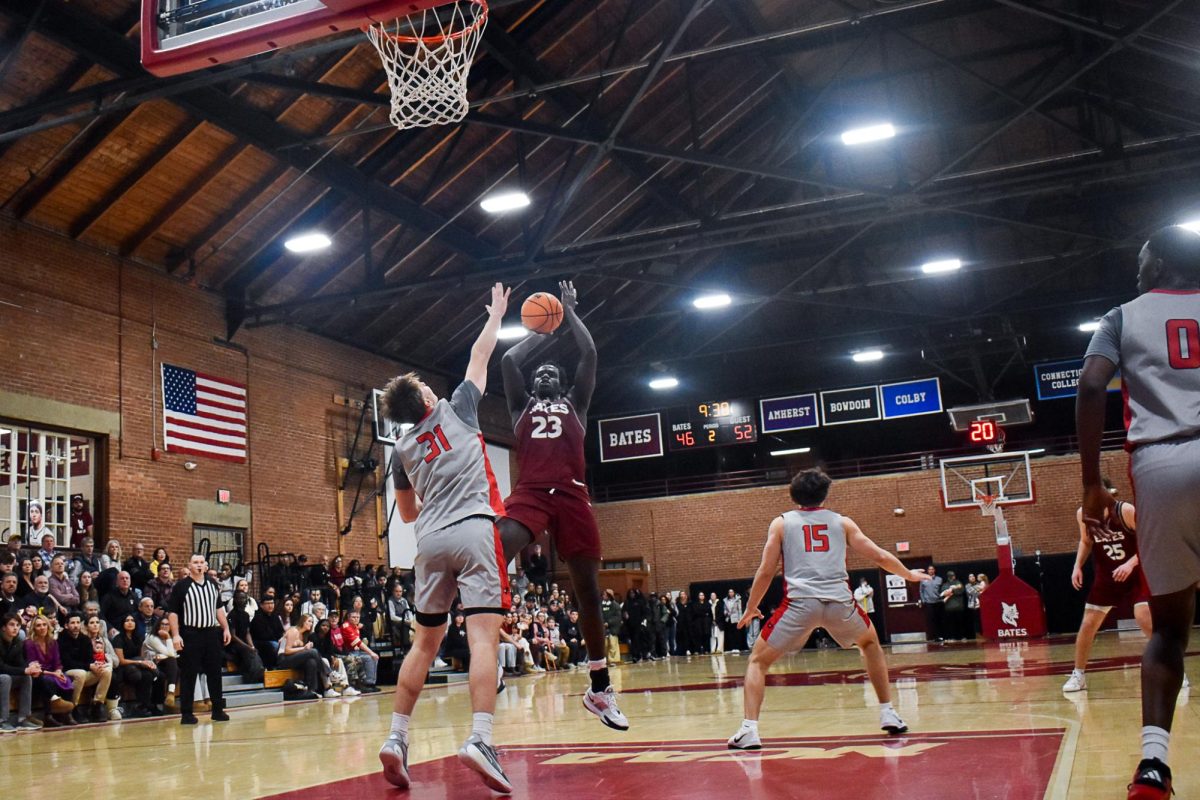Merrill Gymnasium is home to a variety of facilities enjoyed by both the Bates community and the public. Recently, the athletic department has moved forward with the construction of a golf simulator in one of the two convertible squash and racketball courts on the second floor.
The golf team currently has no training space at Bates and regularly travels off campus for practices. This new golfing simulator will give them the flexibility to practice on campus without consideration for the weather or time of day.
However, while this simulator may be beneficial to the golf team, some students resent the athletic department for repurposing the court without consulting the student body. These students have criticized the department for converting a public space available to the entire Bates community into a private training area intended for a select few.
This new equipment allows golf to be played on a digitally simulated golf course indoors. It is composed of a large screen, net and a variety of projectors and sensors which aim to provide an immersive experience. Additionally, there is a mat which simulates a fairway surface. The simulator was funded by a donor which wished for the golf teams to have on-campus training spaces.
As this is a highly technical and expensive piece of equipment which requires instruction to use, it is unlikely that people outside of the golf team will be permitted to use it once the construction is complete.
Scott Lehmann, the Assistant Athletic Director for Facilities and Club Sports, maintains that the repurposing of the court is the best solution to satisfy all parties. He explained that there is no other space on campus which meets the dimensions and security requirements for the simulator.
“There is minimal space on campus for a piece of equipment such as this,” Lehmann wrote. “The simulator needs to be secured due to the high tech equipment; it was designed to fit in a space like a racquetball court due to its dimensions, and it needs a certain amount of floor space for the special matting put down.
“The conversion of underused racquetball courts has been a common solution for athletics and recreation programs looking to maximize the use of existing space, re-purpose less utilized spaces, and modernize program offerings,” he continued.
Nick Glicos, the men’s golf instructor and co-owner/director of Golf at Marindale Country Club seconded Lehmann and added that the simulator will allow players to practice indoors and gather specific information pertaining to the ball flight.
“The simulator will give players information such as swing speed, ball speed, angle of attack, launch angle, show swing path, and more,” Glicos explained. “It’s a very valuable tool.”
Despite this, some students are concerned about the conversion of the space for varsity use and the lack of transparency from the athletic department throughout the process. Jason Lu ‘20 and Gordon Platt ‘19 have been two of the most outspoken students in regards to these concerns.
Their main problem with this project is due to the privatization of the space and the lack of transparency about the project from the start.
“The sign says ‘Closed Indefinitely for Painting and Maintenance,’” Platt said. “This does not at all mean or suggest [that they are repurposing] this for varsity athletes.”
While there will continue to be one court open for public use, Lu asserts that the demand for space will be too high to be satisfied by a single court, especially due to the recent increased interest due to the squash and racquetball physical education (PE) classes taught last fall. In his experience, most students aim to use the courts during similar times, between four and eight p.m. Walking over to Merrill to with friends and finding that there is no space for them, he said, is disappointing.
Additionally, the racquetball PE courses taught last fall will no longer be offered due to the decrease in space.
“It’s pretty crazy because it is such a flexible and multi-use space—racquetball, squash, spikeball, lacrosse, and just a general stretch and warm-up room used by PE classes—down to a strictly varsity space,” Platt said.
Platt also maintained that varsity athletes are asked about their opinions and usage of athletic spaces in the form of an end of season survey, while the rest of the student body goes largely unconsulted.
“I don’t really feel represented by the athletic department,” he said. “It feels like students have to squeeze in the cracks of varsity teams [to use] these spaces.”
“I cannot stress this enough,” Lu said. “I think finding a home for the virtual golf simulator is a priority. We should allow all of varsity athletes the ability to practice in the off-season. What I also want to emphasize is that finding these locations should not be to the overall net detriment to the surrounding community. Students should not have to fight each other for court time.”



